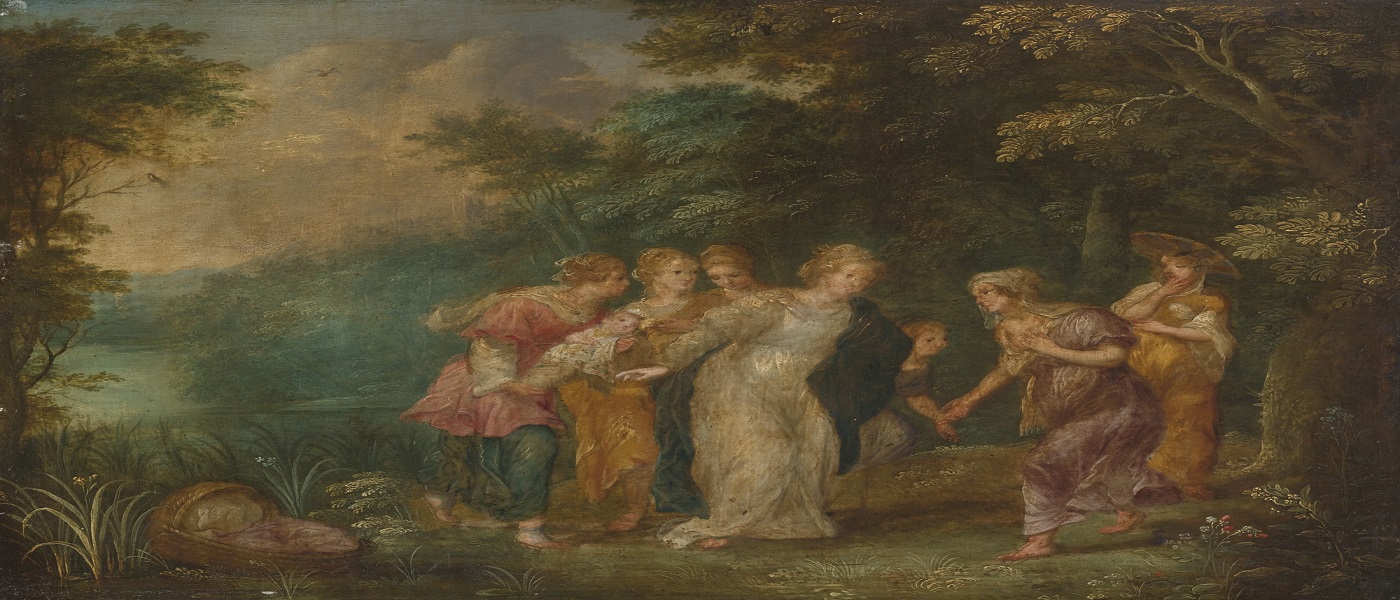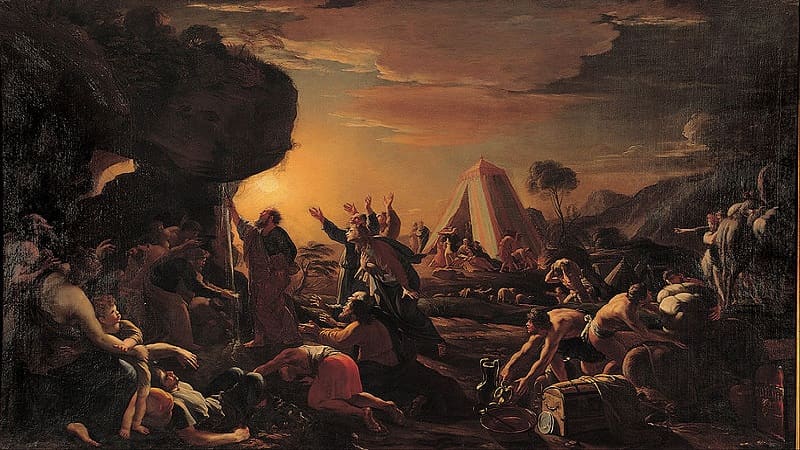

What Are the Teachings on Hygiene in Islam?
Islam is a complete way of life, which deals extensively on both the spiritual, as well as the physical well-being of its adherents. Hygiene in Islam is one of the great privileges in Islam. This write-up is aimed at examining the Islamic perspective on physical cleanliness.
The significance of Hygiene in Islam
Cleanliness and purification is an essential part of Islamic life, and in fact, the philosophy behind it in Islam is much beyond the superficial concept of the conventional cleanliness.
In the Quran, Allah says:
"…Indeed Allah loves the penitent, and He loves those who keep clean." (2:222)
Similarly, one of the injunctions that were revealed unto the Prophet (PBUH&HP) following his call to rise and warn was the purification of his garments [i]. The Holy Prophet (PBUH&HP) and the infallible leaders (AS) have instructed the Muslims to maintain cleanliness and have seriously frowned at dirtiness and untidiness [ii].
Hygiene in Islam at Birth and Death
When a child is born, Islam enjoins the Muslims to maintain a high level of cleanliness and purity concerning him/her, as this has an impact on the mind and soul of that child. If the parents neglect this duty, they should answer before God for the consequences. Similarly, circumcision of the male child-preferably on the seventh day- is a mandatory Islamic custom. That is because it “prevents the child against the possible infection of the male genital organ" [3].
Also, at death, it is mandatory to perform full body washing ablution (Ghusl) for a dead body of a Muslim.
Ablutions (Wudu) & (Ghusl)
In addition, ablution (Wudu) and body purity are considered as very crucial conditions for the validity of prayer (Salat), which is the most significant act of worship in Islam. In fact, on a normal circumstance, a Muslim cannot offer his prayers with an unclean body, clothes or use dirty premises. They are enjoined to use clean, pure water and keep it safe from any form of impurities.
Various full body-washing ablutions (Ghusl) after the release of semen, expiration of monthly period or childbirth, touching of dead bodies, etc. are prescribed in Islam to observe some religious obligations.
Personal Hygiene in Islam
Cleansing of their genitals with water or other cleansing materials after passing urine or excreta are parts of the Islamic customs. Similarly, Muslims on an interval are enjoined to clip their nails and to shave the hair in their armpit and pubic area. Likewise, they are also enjoined to trim their mustaches in order to avert oral intakes, keep oral hygiene, good physical appearance and to make use of fragrance. Similarly, Islam emphatically enjoins a Muslim to keep his clothes, houses, and environment clean. Prophet Muhammad (PBUH&HP) said: “The Arch Gabriel continuously ordered me to clean my teeth until I thought it would be made compulsory” [4].
Food Hygiene
In the Quran and narrations (Hadiths) of the Prophet (PBUH&HP) and the infallible Leaders (Ahl-al-Bayt) (AS), great emphasis has been placed on the cleanliness and purity of the foods and drinks. For the importance attached to the well-being of the body as well as that of the soul, Islam has enjoined the entire human beings and the believers in particular to consume hygienic, pure and lawful foods [iii]. Similarly, it forbids the consumption or usage of all unhygienic, impure and unlawful foods/drinks (such as blood, dead animal, dogs, pig, intoxicants, etc.) and they are considered great sins in Islam and punishable under the Islamic laws.
Conclusion
Cleanliness and personal hygiene in the Islamic custom are aimed at keeping both the body and mind healthy. In some cases such as ablution (Wudu) and body-washing ablution (Ghusl), body purity is considered a prerequisite for the observance of prayers. Moreover, body purity is one of the necessary conditions for attaining an inner or spiritual purity. It is based on this that Muslims are strictly enjoined to uphold high standards of physical hygiene and to be ritually cleaned whenever possible.
Notes:
[i] (74:4)
[ii] The Prophet (PBUHHP) said: "Verily, Islam is [the religion of] cleanliness, so cleanse yourselves. For surely, only the cleanly enter Paradise" [1] and "Observe cleanliness in every respect you are capable, for indeed God based Islam on cleanliness" [2].
[iii]. "O humankind! Eat of what is lawful and pure in the earth…" (2: 168). "O you who have faith! Eat of the good things We have provided you, and thank Allah if it is Him that you worship." (2: 172)
References:
- Nahj al-Fasahah, Vol. 2, P. 998.
- Ibid.
- Ibrahim Amini, Principles of upbringing children, chapter 25 P. 176 (published by Ansariyan publications, Qum)
- Bihar al-Anwar, vol. 76, P. 126.
Share This Article

What Does Islam Say about Prophet Moses? before Prophethood
There are many examples and stories narrated in the Holy Quran, such as the account of Prophet Moses in the Quran, the aim of which is not only to amuse us, but as signs for the “percipient” [1], for “those who think” [2], for those who “exercise their reason” [3] or for “those who possess intellect” [4]. Therefore, after reading each story, those thoughtful and insightful people will gain profound lessons from each account that will be used as a guideline in their life.
The story of Prophet Moses (PBUH) has been mentioned in the Quran in more than 30 chapters, and more than 100 times in details, while the stories of most of the other prophets have been mentioned very briefly.
Going through a few verses of the Quran that narrate the story of Moses and his people will help us compare our life and condition in the society, with what happened at the time of Moses (PBUH), and from its lessons, we might be able to make positive changes in our lives.
The status of Prophet Moses (PBUH) in the Quran is very high: “And mention in the Book Moses. Indeed he was exclusively dedicated [to Allah], and an apostle and prophet.” (19: 51)
Prophet Moses's (PBUH) Childhood
The finding of Moses by Salvator Rosa
Before Moses was born, the Pharaoh of the time had a dream, based on which he ordered to kill all the baby boys who were born amongst children of Israel (Bani-Israel) [i] for a specific time [5]. In such situation, Moses was born, and her mother feared his life. God revealed to her: “Nurse him; then, when you fear for him, cast him into the river, and do not fear or grieve, for We will restore him to you and make him one of the apostles.” (28: 7)
The events that happened to Moses as a baby were particular. When his mother leaves him in the river, and water takes him to Pharaoh’s palace, Pharaoh’s wife who, according to Quranic exegesis, had no children or had no sons and was a monotheist woman (who hid her beliefs) convinces Pharaoh to adopt him as their child [6]. God had forbidden Moses to be suckled by any nurse. And therefore, he was returned to his mother and raised by her and Pharaoh’s wife (28: 12-3) [7].
The most prominent point in Moses’ childhood was that he was raised by faithful women. Quran describes his stepmother as a role model for believers: “Allah cites an example of the faithful: the wife of Pharaoh, when she said, ‘My Lord! Build me a home near You in paradise, and deliver me from Pharaoh and his conduct, and deliver me from the wrongdoing lot’” (66: 11).
It shows the importance of the status of mothers and their vital role in raising faithful children.
Prophet Moses's (PBUH) Youth
“When he came of age and became fully matured, We gave him judgment and knowledge, and thus do We reward the virtuous” (28: 15).
Unlike some narratives in the world that introduce Moses as a powerful and reliable man, but not very spiritual [8], the Quran presents him as one of those virtuous. It means that he had been righteous from childhood until his young age, and therefore, divine judgment and knowledge were given to him as a result of his good behavior.
One of the bold points that should be considered in this part of Moses’ life is his companionship with Prophet Khidhr. Although in most narrations it is said that the part of his life which is referred to in the Quran belongs to his old age, it is more logical to say that this companionship takes place when he was young and still a prince. Since he is being accompanied by a slave as mentioned in the Quran: “So when they had passed on, he said to his lad, ‘Bring us our meal. We have certainly encountered much fatigue on this journey of ours’” (18: 62).
Now, if we accept that his companionship with Khidhr took place at his young age, this also becomes a significant turning point for Moses (PBUH), in which he learned a lot from a prophet.
In the story of his youth, Quran mentions his positive attitude towards people and his support for the rights of the poor and the weak. Based on his beliefs, one time that he wants to defend a person from Bani- Israel, he unwantedly kicks his enemy in a way that he dies.
This act in the Quran is introduced as one of the significant turning points in his life. As when Pharaoh finds out, he sends someone to arrest him, and Moses runs away towards the city of Midian (Madyan) (28: 15-21).
“And when he turned his face toward Midian, he said, ‘Maybe my Lord will show me the right way’” (28: 22).
Prophet Moses's (PBUH) Marriage
Moses defends Zipporah and her sisters at a rather medieval-looking well painted by Saraceni
When Moses arrives at the water of Midian (Madyan), he sees “a throng of people watering [their flocks], and he found, besides them, two women holding back [their flock].” He asks the reason, and they reply “We do not water [our flock] until the shepherds have driven out [their flocks].”
And to answer the probable question in Moses’ mind about why two women are doing the hard task of watering the flocks she continues: “our father is an aged man” (28: 23). So Moses waters their flock. “Then he withdrew toward the shade (of a tree) and said, ‘My Lord! I am indeed in need of any good You may send down to me!’” (28: 24) Moses does not even mention what kind of good he is expecting from God. But he leaves everything to God and asks Him to provide him with good [9].
After a while of resting under the shade of a tree “one of the two women approached him [Moses], walking bashfully. She said, ‘Indeed my father invites you to pay you the wages for watering [our flock] for us.’
So when he came to him and recounted the story to him, he said, ‘Do not be afraid. You have been delivered from the wrongdoing lot’” (28: 25). As he had left the borders of Egypt and he was now safe in Midian (Madyan). At that point, Moses realized that he had reached an insightful and knowledgeable man. The father of two women is Prophet Shu’ayb (PBUH), who, according to the Quran, was the prophet sent to people of Midian (Madyan): “And to Midian, We sent Shu‘ayb, their brother” (29: 36) [10].
Moses stays with Prophet Shu’ayb for a while. It seems like one of Shu’ayb’s daughters was interested in Moses and his manly behavior as she offers his father “Father, hire him. Indeed, the best you can hire is a powerful and trustworthy man” (28:26). Being powerful and strong as well as being trustworthy are mentioned here as two crucial criteria for employing a person [11].
Having heard his daughter’s interests, Shu’ayb (PBUH) then said, “Indeed I desire to marry you to one of these two daughters of mine, on condition that you hire yourself to me for eight years. And if you complete ten, that will be up to you” (28:27).

There are a few great lessons in this part of the story of Moses;
1- Unlike what is conventional in many societies, it is not bad for a reasonable girl to choose her husband and offer him marriage (of course, by adhering to correct manners) [12].
2- The dowry of Shu’ayb’s daughter (which is Moses’ working for Shu’ayb for eight to ten years) seems to be too much, but compared to the life and conditions that Shua’yb provides for Moses is not considerable [13].
3- This dowry was a necessity for Moses to stay with Shu’ayb and to be trained under his doctrines [14].
Moses marries Prophet Shu’ayb’s daughter, and they live in Midian for a specific time. Living with a prophet for many years is one of those blessings that were given to Moses to be trained for his primary mission in life.
Although living with Shu’ayb was a great blessing for Moses, he did not aim to stay a shepherd for the rest of his life, since he had seen significant responsibilities for himself to save the children of Israel (Bani- Israel). Therefore, he decided to travel to Egypt with his family [15].
In the next part of this article, we will follow Moses in his journey of prophethood.
Notes:
[i] Children of Israel (Bani-Israel) were the generation of Prophet Jacob or Israel (PBUH), who at the time of Prophet Joseph (PBUH), migrated to Egypt and settled there for years. (12: 93-9)
References:
- The Quran, Hijr (15): 75
- The Quran, Ra’d (13) : 3
- The Quran, Nahl (16): 12
- The Quran, Aal-e Imran (3): 190
- Makarem –e Shirazi, N. Tafseer-e Nemouneh, vol. 16, p. 14
- Makarem –e Shirazi, N. Tafseer-e Nemouneh, vol. 16, p. 30
- Makarem –e Shirazi, N. Tafseer-e Nemouneh, vol. 16, pp. 34- 38
- Scott, R. (2014), Exodus: Gods and Kings, 2014, USA
- Makarem –e Shirazi, N. Tafseer-e Nemouneh, vol. 16, pp. 56-58
- Makarem –e Shirazi, N. Tafseer-e Nemouneh, vol. 16, p. 59
- Makarem –e Shirazi, N. Tafseer-e Nemouneh, vol. 16, p. 67
- Makarem –e Shirazi, N. Tafseer-e Nemouneh, vol. 16, p. 70
- ibid
- ibid
- Makarem –e Shirazi, N. Tafseer-e Nemouneh, vol. 16, p. 74
Read More

40 Inspirational Imam Rida (AS) Quotes
1. The Taste of Water
The taste of water is the taste of life.
Mohammad-Baqer Majlesi, Bihar al-Anwar, vol.49, p.99.
2. Cleanliness
Cleanliness is among the manners of prophets.
Mohammad-Baqer Majlesi, Bihar al-Anwar, vol.78, p.335.
3. Halal Food
Any food that benefits the body and brings energy to it is allowed (Halal), and whatever harms the body and drains its energy is forbidden (Haram).
Baqir Sharif al-Qurashi, Al-Fiqh al-Radawi, p.254.
4. A Plan for Life according to Imam Rida (AS)
Try to divide your day into four parts; a part for praying to Allah, one for providing your livelihood, one for spending time with your friends and the ones you trust to tell your mistakes and love you sincerely, and a part for enjoying Halal pleasures which gives you the ability to fulfill the other parts.
Baqir Sharif al-Qurashi, Al-Fiqh al-Radawi, p.337.
5. This World and the Hereafter
The one who puts aside his/her world [ultimately] for the sake of his/her religion, or vice versa, is not among our followers.
Mohammad-Baqer Majlesi, Bihar al-Anwar, vol.78, p.346.
6. Manners
Observe your manners in your relations with the ones older or younger than you.
Mirza Husayn Nuri, Mustadrak al-wasa'il, vol.8, p.354.
7. A Believer's Grief
Whoever washes away a believer's grief, Allah will save him/her from despair on the Day of Judgment.
Muhammad ibn Ya'qub al-Kulayni, al-Kafi, vol.2, p.200.
8. Gratitude
Allah has commanded to express gratitude toward Himself and your parents; therefore, if you don't give thanks to your parents, you are not grateful to Allah.
Al-Shaykh al-Saduq, Al-Khisal, p.156.
9. Reason and Ignorance
Reason is your best friend and ignorance, your worst enemy.
Ibn Shu’bah, Tuhaf al-Uqul, p.443.
10. Make Attempts
You are ridiculing yourself if you ask for Allah's help, yet don't make any attempts [to reach your goal].
Muhammadi Reyshahri, Mizan al-Hikmah, hadith no.2790.
11. Greetings
The one who greets a poor Muslim differently than a rich person will face Allah's wrath on the Day of Judgement.
Al-Shaykh al-Saduq, Uyoun Akhbar Al-Ridha, vol.2, p.59.
12. Generosity
From the two groups who face each other, victory belongs to the one that shows more generosity.
Mohammad-Baqer Majlesi, Bihar al-Anwar, vol.71, p.452.
13. Modesty in Imam Rida (AS)'s View
Modesty has different manifestations; one is for those who know their limitations, accept their position contently, like to treat people the way they expect to be treated, confront insult with benevolence, control their anger and forgive people. Allah loves the righteous.
Muhammad ibn Ya'qub al-Kulayni, al-Kafi, vol.2, p.124.
14. Optimism
Allah will treat the one who holds an optimistic view toward Him, the same as his/her approach.
Muhammad ibn Ya'qub al-Kulayni, al-Kafi, vol.8, p.347.
15. Eating Less
Eating less and refraining from excessive use of food will protect your body against various diseases.
Al-Ma’mun ,al-Risa’la al-Dhahabiya fi al-Tibb, p.270.
16. Sickness and Health
Two groups are always sick; A healthy person who abstains from food and a sick person who does not abstain.
Baqir Sharif al-Qurashi, Al-Fiqh al-Radawi, p.340.
17. Respect Allah
Whoever respects Allah's sanctuary, he/she will be respected, and whoever obeys Allah, will be obeyed.
Muhammad ibn Ya'qub al-Kulayni, al-Kafi, vol.1, p.137.
18. A Generous Person
A generous person eats from other people's food [if invited], for people to eat from his/hers, and the ungenerous does not eat from other's food, to not offer his/her own food to others.
Al-Shaykh al-Saduq, Uyoun Akhbar Al-Ridha, vol.1, p.15.
19. Children and the Elderly
Respect the elderly, be kind to children, and pay a visit to your relatives.
Al-Shaykh al-Saduq, Uyoun Akhbar Al-Ridha, vol.2, p.265.
20. Praying to Allah
Allah delays granting the request of a believer, since He is eager to listen to him/her praying, saying, "This is the voice I love listening to" and hasten in granting the request of a hypocrite, saying, "This is the voice I loathe hearing."
Baqir Sharif al-Qurashi, Al-Fiqh al-Radawi, p.345.
21. Know Your Value
Whoever knows his/her value will never be devastated.
Mohammad-Baqer Majlesi, Bihar al-Anwar, vol.72, p.66.
22. Eid al-Fitr as Imam Rida (AS) Describes
Fitr has been appointed as Eid for Muslims to come together as a community on this day in the presence of the Lord and thank Him for His blessings.
Ibn Qūlawayh, Kamil al-Ziyarat, p.522.
23. Visiting Relatives and Friends
Visit each other regularly to create more love between yourselves, and hold each other's hands and wipe anger away from your hearts.
Mohammad-Baqer Majlesi, Bihar al-Anwar, vol.78, p.347.
24. The Manner of Borrowing
The one who borrows something with the intention of giving it back is under Allah's protection until he does so. However, if he doesn't have the intention of paying the debt back to its owner, he is considered a thief.
Baqir Sharif al-Qurashi, Al-Fiqh al-Radawi, p.268.
25. Signs of Awareness in Imam Rida (AS)'s Words
Patience, knowledge, and silence are signs of awareness. Silence is one of the gates to wisdom. It endows human beings with tenderness and guides them toward virtues.
Muhammad ibn Ya'qub al-Kulayni, al-Kafi, vol.2, p.113.
26. Perfume
Wearing perfume is one of the manners of prophets.
Muhammad ibn Ya'qub al-Kulayni, al-Kafi, vol.6, p.510.
27. Repenting
The one who repents from sin and repeats doing it seems like a person who is ridiculing his/her Lord.
Muhammad ibn Ya'qub al-Kulayni, al-Kafi, vol.2, p.504.
28. A True Worship
The value of worshipping does not depend on the number of prayers or fasts. Instead, true worship is pondering deeply on Allah and everything related to Him.
Ibn Shu’bah, Tuhaf al-Uqul, p.442.
29. Knowing Allah
The first step in serving Allah is knowing Him.
Al-Shaykh al-Saduq, Al-Tawhid, p.34.
30. Allah's Reward
Whoever smiles at his/her fellow believer, will win Allah's reward.
al-Shaykh al-Saduq, Kitāb muṣādaqat al-ikhwān, vol.1, p.157.
31. Give Thanks
The one who doesn't gratify a kindness received by others has not given thanks to Allah Almighty.
Al-Shaykh al-Saduq, Uyoun Akhbar Al-Ridha, vol.2, p.24.
32. Committing Sins
Insignificant sins lead into great sins and the one, who doesn't have any fear of Allah while committing the insignificant ones, won't feel any fear in doing the great ones.
Mohammad-Baqer Majlesi, Bihar al-Anwar, vol.73, p.353.
33. Forbearance
You are not a devout worshipper if you do not seek forbearance.
Muhammad ibn Ya'qub al-Kulayni, al-Kafi, vol.2, p.11.
34. Neighborhood
If your neighbor is not safe from your harm, you are not among our followers.
Al-Shaykh al-Saduq, Uyoun Akhbar Al-Ridha, vol.2, p.24.
35. Promises
The one who breaks promises is prone to unfortunate incidents.
Mohammad-Baqer Majlesi, Bihar al-Anwar, vol.67, p.186.
36. Relief and Despair
Verily, relief, and success comes after despair.
Mohammad-Baqer Majlesi, Bihar al-Anwar, vol.52, p.110.
37. Faith in Allah
Faith includes knowing by heart, confessing by the tongue, practicing by all parts of your body.
Ibn Shu’bah, Tuhaf al-Uqul, p.422.
38. The Manner of a Believer
A believer does not leave aside what is right, when in anger, and does not go astray, in happiness, and does not take more than he/she deserves, while in power.
Mohammad-Baqer Majlesi, Bihar al-Anwar, vol.75, p.355.
39. The Stingy, The Envious, The Ruler, The Liar
There is no peace for the stingy, no pleasure for the envious, no guarantee for the rulers, and no conscience for the liar.
Ibn Shu'bah, A Summery of Tuhaf al-Uqul, hadith no. 500249.
40. A Deceitful Worship
Doubt the faith of the one who shows off with his/her worships to Allah, since Allah Al-mighty abhors bragging about worship and appearance.
Mohammad-Baqer Majlesi, Bihar al-Anwar, vol.70, p.252.
Read More

